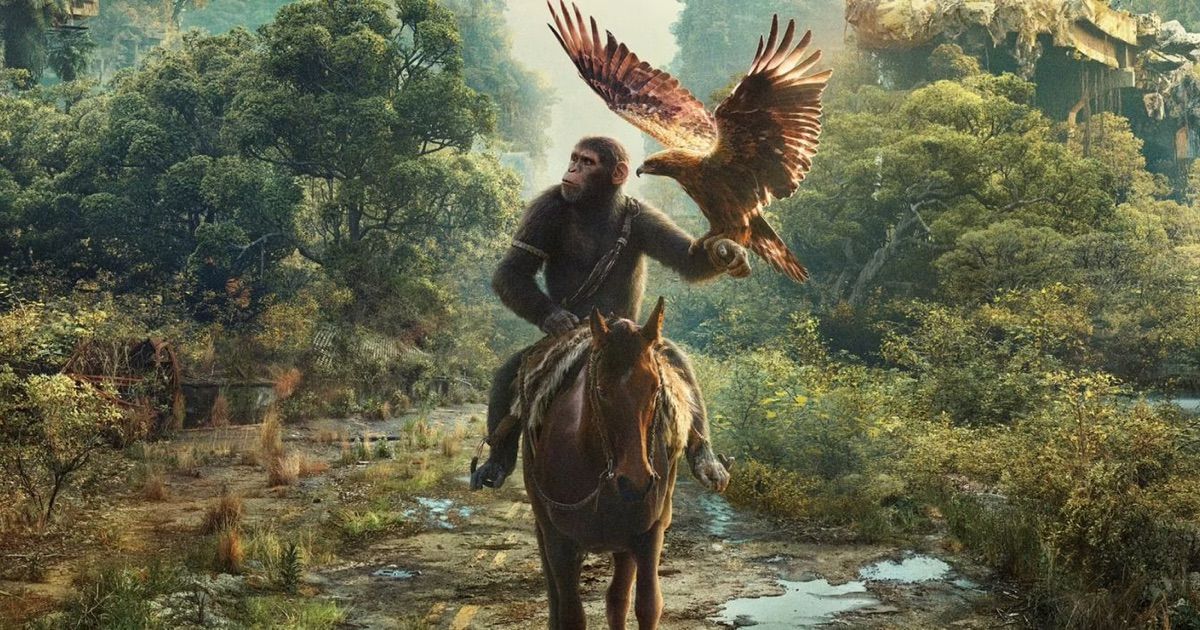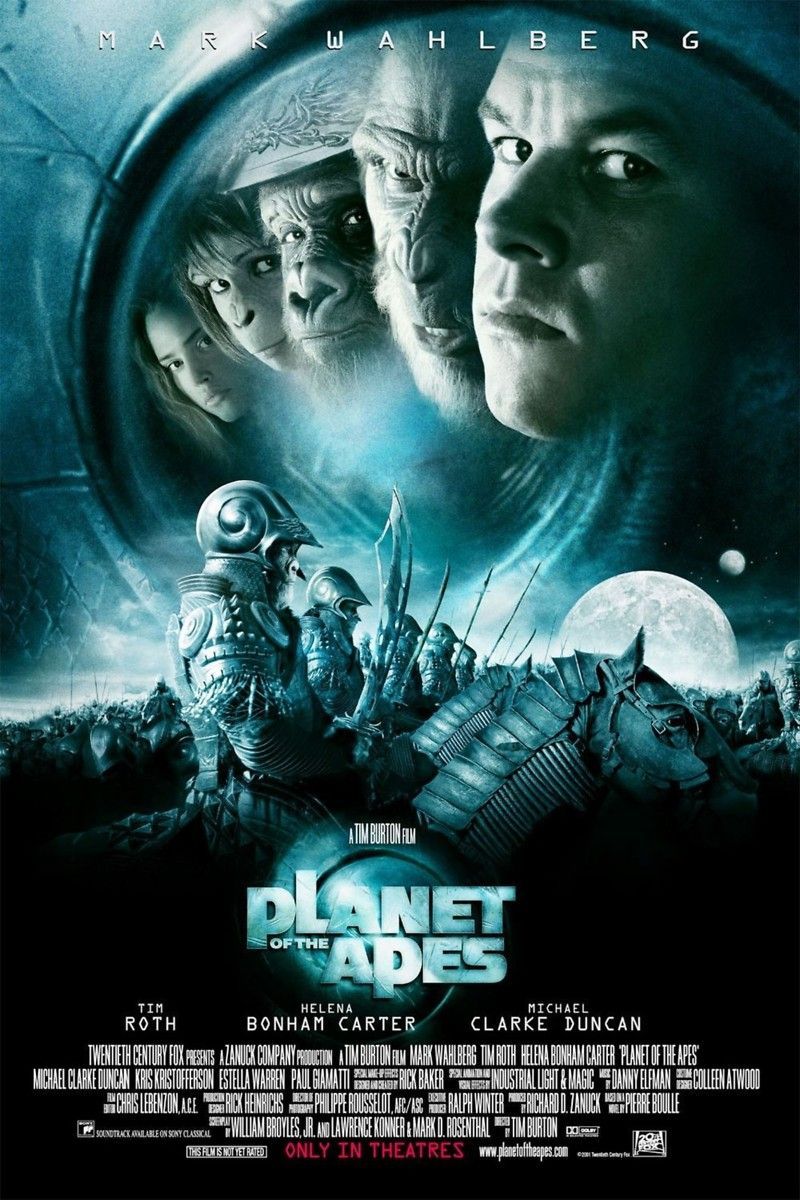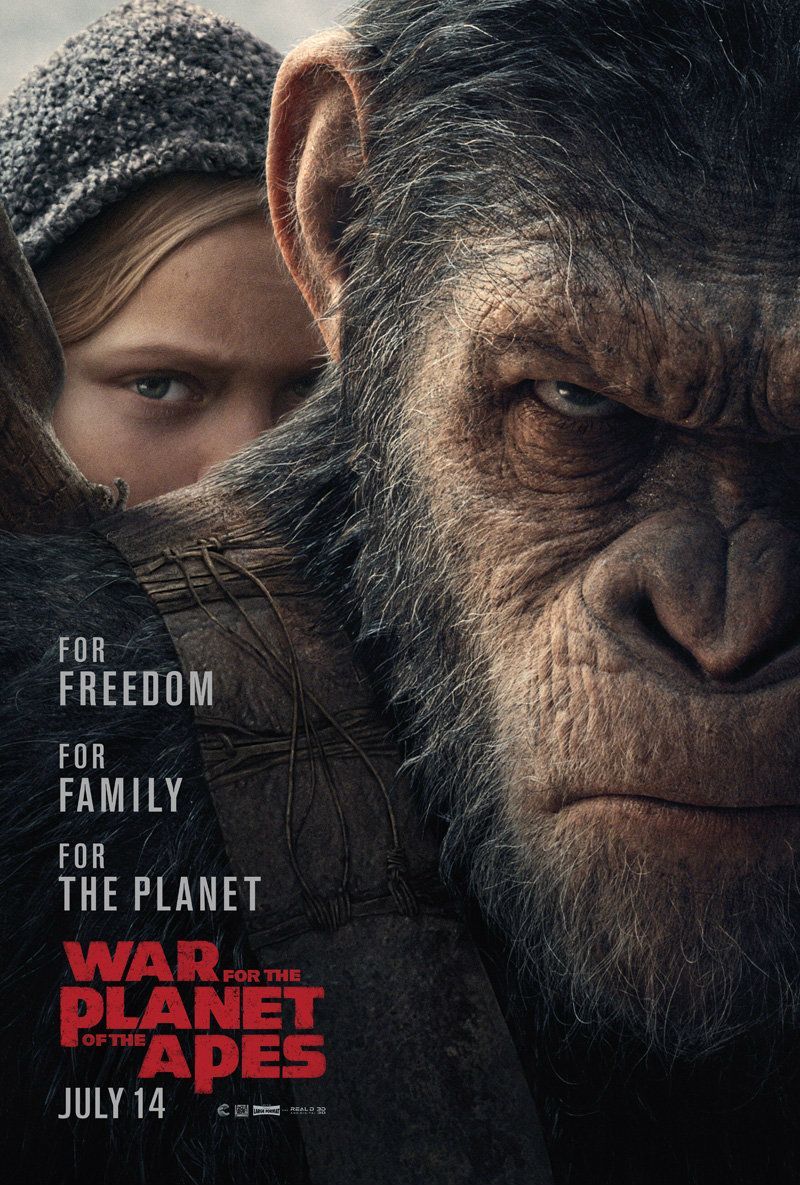[ad_1]
The Planet of the Apes film franchise is one of the oldest and most extensive in Hollywood’s history. The first movie of the series, simply titled Planet of the Apes, was released in 1968, and it starred Charlton Heston as an astronaut who crash lands on a planet populated by intelligent apes. Heston’s character, George Taylor, sees the good and bad sides of an ape civilization that rules over humans who have lost their intelligence and ability to speak. The film was loosely based on a French novel of the same name, written by Pierre Boulle, which had been published five years prior, in 1963.
In the last 60 years, the Planet of the Apes franchise has been substantially expanded. There are now nine feature films — with the tenth, Kingdom of the Planet of the Apes, set to release imminently — as well as two television series, a handful of further novels, and many other comic books as well. Across the franchise’s history, its films have experienced tremendous ups and downs, both in terms of quality and box office receipts.
However, the Planet of the Apes series still stands tall as the seventh highest-grossing science-fiction franchise in film history. With its total box office gross exceeding $2.2 billion, it lands above franchises like Terminator and Alien, though just below Star Trek. With the franchise set to make a big return with Kingdom this summer — potentially giving it the push it needs to surpass Star Trek on that list — we’ve decided to take a look back at each film in the Planet of the Apes franchise and see how they fared at the box office.
9 Planet of the Apes (1968) – $33 Million
Much of the success of the Planet of the Apes franchise is tied directly to the impact of the first film. Directed by Franklin J. Schaffner and co-written by Michael Wilson (Lawrence of Arabia, The Bridge on the River Kwai) and Rod Serling (The Twilight Zone), the first Apes film embraced its sci-fi origins while also prioritizing the socially conscious thematic material at the center of the story. It was a major success both critically and financially. It went on to be nominated for two Academy Awards, Best Costume Design and Best Original Score, and John Chambers received an honorary Oscar for his groundbreaking work on the film’s make-up.
Planet of the Apes Was One of 1968’s Biggest Films
Over the course of its original theatrical release, Planet of the Apes’ gross climbed to a total of just under $34 million. This may not seem like a lot by today’s standards, but it was the highest-grossing science-fiction film of all time at that point. It was one of the highest-grossing films of that year, and one of the most talked about movies of the late ’60s. However, it was upstaged a bit that year, as its box office and critical achievements were overshadowed by the release of another now-iconic sci-fi film, Stanley Kubrick’s 2001: A Space Odyssey, which was released just a few months after Apes.
8 Beneath the Planet of the Apes (1970) – $17 Million
With the success of 1968’s Planet of the Apes, the development of a sequel began almost immediately. 20th Century Fox was keen on producing the sequel as quickly as possible, which resulted in much of the original creative team not being involved. Serling could not produce a script quickly enough, while Schaffner was busy directing 1970’s Patton. After a script written by Boulle, the original novel’s author, was also passed on, the concept for Beneath the Planet of the Apes was brought to life by screenwriter Paul Dehn and director Ted Post. The sequel centers on another astronaut landing on the future Earth in search of Heston’s character from the first film.
The Beginning of Planet of the Apes as a Franchise
1970’s Beneath the Planet of the Apes was far from the incredible success that the 1968 film had been. The reception to the film from critics and audiences was much more mixed, as some criticized the film for its bland dialogue and basic story compared to its predecessor. The box office results were half that of the first movie, as Beneath only grossed $17 million upon its release. While this wasn’t enough to get the film onto any end-of-year lists, the movie was still fairly profitable for 20th Century Fox. The sequel was made on a budget of just $2.5 million, compared to the $6 million of the first, allowing Beneath to still turn a strong profit despite its drop in total box office.
7 Escape from the Planet of the Apes (1971) – $12 Million
The third Planet of the Apes film, Escape from the Planet of the Apes, took a totally different approach to the series from Beneath the Planet of the Apes. There was once again a quick turnaround between films, as Escape was released in theaters almost exactly a year after Beneath, with Dehn returning to write the screenplay while Don Taylor stepped in to direct. The story saw three apes (Cornelius, Zira, and Dr. Miro) traveling back in time to Los Angeles in the year 1973. From there, the set-up is almost the exact opposite of the original Apes film, as these characters are forced to confront the human world before the apes become the dominant species.
Escape from the Planet of the Apes Improved the Franchise in Some Ways
The biggest difference between Escape from the Planet of the Apes and Beneath the Planet of the Apes is the general reaction from critics and audiences. While many were let down by Beneath, Escape was seen as a major return to form for the series, as it more clearly embraced the thematic material of the first film and challenged its viewers with a thought-provoking story and complex characters. To this day, Escape is frequently considered to be one of the best sequels of the original Planet of the Apes. Unfortunately, the box office continued to decline, as Escape only managed to gross $12 million upon its release. However, once again, the film was saved by a shrunken budget, which had declined to just $2 million.

Why Continuing the Planet of the Apes Franchise Is Actually a Good Idea
The Planet of the Apes franchise has done many things right, and its future looks promising.
6 Conquest of the Planet of the Apes (1972) – $9 Million
The fourth Planet of the Apes continues to build on the new story introduced in Escape from the Planet of the Apes. This fourth film, Conquest of the Planet of the Apes, once again followed just a year after Escape. While Dehn returned as screenwriter once again, J. Lee Thompson became the fourth director to work on the growing series. Conquest is set in a fictional 1993, twenty years after the events of Escape, and it follows Caesar, the child of Cornelius and Zira, as he leads an uprising against an authoritarian human government that operates on the back of the slave labor of apes.
Conquest of the Planet of the Apes Continued the Box Office Descent
The response to Conquest of the Planet of the Apes from critics and audiences wasn’t quite as positive as it had been for Escape, though it was still a solid continuation of the story that had begun in that film. However, it also continued the consistent downward trajectory that the franchise has been on at the box office. As the fourth Planet of the Apes film in five years, Conquest topped out at just $9 million at the box office. With a budget of $1.7 million, this was still enough to make a profit, though the budget limitations were beginning to show, as the makeup and effects were not as great as they once had been.
5 Battle for the Planet of the Apes (1973) – $8 Million
The final film in the original Planet of the Apes series was 1973’s Battle for the Planet of the Apes. Once again, the film followed just a year after the last, and it continued the story of Caesar that was begun in Conquest of the Planet of the Apes. The story details the final years that apes and humanity shared the Earth, though tensions are high and the film details the violent uprisings and conflicts that occur as the two species attempt to dominate one another. Dehn was hired to write the screenplay, though he shared writing duties with both John William Corrington and Joyce Hooper Corrington on this final film. J. Lee Thompson returned to direct, becoming the first director to work on more than one film in the series.
Battle for the Planet of the Apes Was the End of the Franchise
Battle for the Planet of the Apes was advertised as the final Planet of the Apes film, though it seems likely that the original series would have ended here whether it was meant to or not. Battle performed very similarly to Conquest, as it grossed just $8 million at the box office on a budget of $1.7 million. While that was a decent performance, the critical and audience reception to the film was the worst it had been in the series’ history. At this point, it was clear that Planet of the Apes was losing steam at the box office. While efforts were made to keep the franchise alive through a 1974 live-action television series on CBS and an animated series on NBC in 1975, both served as further proof that the Planet of the Apes series was running on fumes.
4 Planet of the Apes (2001) – $362 Million

Planet of the Apes (2001)
It would be nearly 30 years until the Planet of the Apes series would return to theaters. This new film would be a complete reboot of the series, directed by Tim Burton. Like the original 1968 film, 2001’s Planet of the Apes is a loose adaptation of the original 1963 novel, as an astronaut crashes on a planet run by a civilization of intelligent apes. Mark Wahlberg plays the lead role in the film (a character named Leo Davidson), while the apes in the film are portrayed by an impressive cast that includes Tim Roth, Helena Bonham Carter, Paul Giamatti, and Michael Clarke Duncan.
Tim Burton’s Planet of the Apes Showed There Was Still Interest
The 2001 Planet of the Apes reboot has a somewhat complicated legacy. That’s because the film was a solid success at the box office despite the overwhelmingly negative response to it. The reception from both critics and audiences was far from what 20th Century Fox and Tim Burton had hoped for, and Burton has since been very outspoken about his negative experience with the movie, going as far as saying that he would “rather jump out a window” than make a sequel. However, with a $100 million budget, 2001’s Planet of the Apes opened with nearly $70 million, which was the second-highest debut of the year, as well as the largest July opening in history at that point. Overall, the film went on to gross $180 million in North America and a global total of $362 million. The lesson here was clear: audiences were interested in new Planet of the Apes movies, just not like this.

How Planet of the Apes Is Poised for a Big Return
Planet of the Apes has a long history as a major sci-fi franchise in Hollywood. Now with a new film underway, the series’ future is as bright as ever.
3 Rise of the Planet of the Apes (2011) – $470 Million
Any development of a sequel to Tim Burton’s Planet of the Apes fell apart shortly after the film’s release in 2001. However, 20th Century Fox decided to try and reboot the franchise once again. Ultimately, it was the writing duo of Rick Jaffa and Amanda Silver that came up with the story that would become 2011’s Rise of the Planet of the Apes. Directed by Rupert Wyatt, this latest reboot took most of its inspiration from the original Planet of the Apes sequels, primarily Escape from the Planet of the Apes and Conquest of the Planet of the Apes. With the apes brought to life with motion-capture technology rather than practical makeup, Andy Serkis joined the cast as Caesar, a hyper-intelligent ape who serves as the catalyst for a new ape civilization.
The Beginning of a New Planet of the Apes Trilogy
When Rise of the Planet of the Apes hit theaters in 2011, it quickly became clear that Tim Burton’s 2001 film had not killed general audiences’ interest in the franchise. Rise was significantly better, and the positive word of mouth drove the movie to a $54 million opening weekend. It then demonstrated decent box office stamina, as it grew to a total of $176 million in North America and $294 million overseas. With a worldwide total of $470 million, on a budget of $96 million, the film successfully turned the franchise around. While it was far from the highest-grossing movie of the year, it was a solid win that was more than strong enough to build on.
2 Dawn of the Planet of the Apes (2014) – $710 Million
The much-anticipated sequel to Rise of the Planet of the Apes would come three years later, as Dawn of the Planet of the Apes opened in the summer of 2014. The team behind Rise was originally meant to return, as Wyatt was signed on to direct a sequel and Jaffa and Silver had already written a script. However, as development continued, Wyatt was replaced by Matt Reeves, and the script was rewritten by Mark Bomback. The result was a film that felt much more dystopian than Rise had, as it tackled the building tensions between humanity and Caesar’s ape colony following humanity’s collapse due to a global pandemic, ultimately leading to a war that neither side wanted.
A New Era for Planet of the Apes
While Rise of the Planet of the Apes was a success, Dawn of the Planet of the Apes became one of the defining blockbusters of 2014. The film received acclaim that the franchise had not seen since the original film opened in 1968, and the buzz surrounding the film was inescapable. With a $72 million opening, Dawn went on to gross $208 million in North America and a whopping $502 million overseas. With a global total of $710 million, this easily made Dawn the highest-grossing film in the Planet of the Apes franchise, a title it still holds to this day. It also became the eighth-highest-grossing movie of 2014, and it earned an Oscar nomination for Best Visual Effects.
1 War for the Planet of the Apes (2017) – $489 Million

War for the Planet of the Apes
Finally, the most recent Planet of the Apes film at this point is 2017’s War for the Planet of the Apes, the concluding chapter in the modern trilogy starring Serkis as Caesar. The film picks up several years after Dawn, as humanity and the apes are at all-out war with one another. Humanity is gasping for breath, while the apes’ civilization continues to evolve and Caesar is faced with the toughest challenges he has ever faced. War was clearly made to serve as the finale of this trilogy, and Serkis gives one of the best performances of his career in the lead role. Reeves returned to the director’s chair, with Bomback also returning to co-write the screenplay alongside the filmmaker.
War of the Planet of the Apes Is a Strong (But Not Perfect) Finish
The reception to War for the Planet of the Apes was similarly strong to that of Dawn, though the movie itself didn’t quite catch on as much as its predecessor had. It opened to $56 million in North America, down $15 million from the last film, and it did not demonstrate the same kind of staying power that Dawn had at the box office. Still, the film was considered a box office success, as it pulled in $146 million in North America and $342 million overseas. With a global total of $489 million, War completed its run over $200 million below Dawn.
Some attribute this decline to the film’s dour tone, while others believe that the summer of 2017 was overloaded with sequels and franchise fare. Still, the film did well for itself and the strong positive response certainly helped, and the franchise was left in a strong enough place for Kingdom of the Planet of the Apes to continue its story seven years later.
[ad_2]
.









